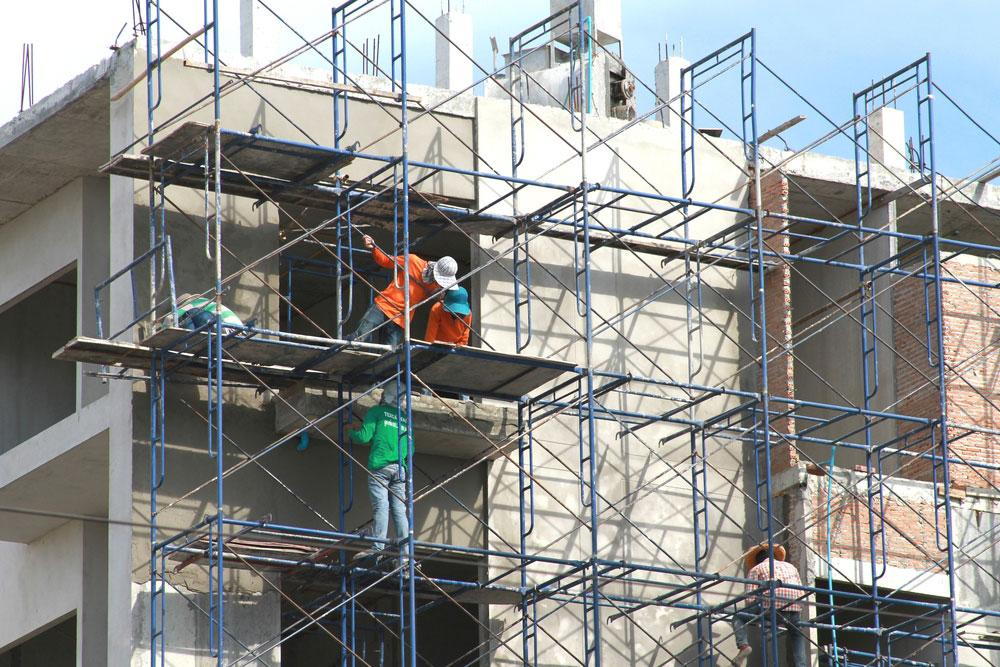
Construction sites are inherently dangerous for a number of reasons. They typically involve working at great heights while using machinery and tools or moving materials that are heavy or awkward to handle.
Therefore, construction scaffolding is an essential tool. They make construction sites safer by making it easier to access areas of a building at different levels.
Unfortunately, scaffolding also poses significant risks. Moreover, scaffolding accidents continue to be one of the most common causes of death in the construction industry.
Research shows that fatal accidents would not have occurred if certain OSHA regulations had been met. These regulations include:
Using the proper equipment
Installing scaffolding correctly
Using fall protection equipment
Receiving adequate training in constructing and using scaffolding systems
Scaffolding is designed to support weights in certain ranges. If a structure is overloaded, there’s a risk that it will fail catastrophically and collapse suddenly without warning. Such collapses can have devastating consequences for anyone in the area at the time of the incident.
Lack of Safety Practices and Procedures
One of the main reasons that scaffolding accidents occur is that managers and workers do not adopt safe working practices.
Scaffolding involves a complex structure, so it’s essential that everyone working at a construction site is properly trained and knowledgeable about the systems they’re using.
Therefore, scaffolding safety starts with construction managers and supervisors. They play a critical role in making a construction site safe and hazard-free.
Poorly Maintained Equipment
Poorly-maintained equipment, including scaffolding components and fall protection equipment, can lead to serious injuries and fatalities. For example, a poorly-maintained or badly damaged support beam can cause a scaffolding system to fail.
It's essential then that all equipment is in good working order at all times. This includes making sure that scaffolding components are properly sized, constructed, and installed so they can safely support the loads they’re supposed to bear.
It’s also important that scaffolding boards are securely fastened to ensure they stay in place and don’t become loose or dislodged during use.
Overloading of Scaffolding Structures
To avoid overloading a scaffolding structure, you need to know the weight of the materials and the approximate weights of the people using the system.
The rated load capacity of a light-duty scaffold is 25 pounds per square foot (PSF), while the medium-duty capacity for scaffolding is 50 PSF. Brick masons frequently use this load capacity when working at a height.
Heavy-duty scaffolding holds a load capacity of 75 PST. This type of scaffolding is often used by stone setters in the construction trade. Therefore, the maximum weight is determined in terms of the permissible load per square foot multiplied by the square footage of the work surface of the scaffold.
Let’s look at an example.
If you have a light-duty scaffold measuring seven feet long and five feet wide (35 square feet), you will multiply 35 square feet by 25 PSF. In this scenario, you can't load the structure with more than 875 pounds. Therefore, you could reasonably hold three people, up to 250 pounds, and add tools and materials up to 125 pounds. Naturally, you would want to keep the weight somewhat lower to ensure safety.
Inadequate Fall Protection Measures
A fall from a height is a serious risk for anyone working up high. Moreover, if a worker falls from a significant height, they have very little time to react. Therefore, any protection that’s in place must be sufficient to slow the fall and prevent injury.
If a fall is not arrested successfully, the consequences can be fatal. To reduce the risk of a fall occurring, scaffolders should wear fall arrest equipment, and barriers should be put into place.
What a Personal Fall Arrest System Should Include
A personal fall arrest system is made up of an anchorage, body belt or harness, and connectors, including, in some cases, a deceleration device, lifeline, and/or lanyard. The equipment is designed to stop a potentially fatal fall.
Guardrails and Crossbracing Placements
OSHA recommends that scaffolding feature top rails that range from 38 inches to 45 inches in height. Crossbracing, when a crosspoint is used for the top rail, must span between 38 inches and 48 inches in height over the working platform.
Midrails must also be installed about halfway between the platform and top rail. If the crosspoint of crossbracing is deployed for the mid rail, it must range between 20 and 30 inches over the work platform.
Incorrect Assembly and Erection of Scaffolding Elements
Another cause of scaffolding accidents is the incorrect assembly of the scaffolding elements. Assemblers may use the wrong types of bolts or screws or avoid double-checking the placement of the supports. To prevent these errors, it's important that all scaffolders be trained in correct assembly.
Keeping Safe While Working Up High
When any scaffolding has been erected, workers should never leave items unattended, as doing so can lead to a fall or tripping hazard on the platform. Also, damaged scaffolding systems should never be used, including systems with missing parts.
Scaffolding with slipping dangers, such as mud, water, or ice, should be avoided, and the structures should not be used on days of high winds, snow, fog, or heavy rains.
Call Us Today to Speak with a New Mexico Personal Injury Attorney
Construction scaffolding is a common structure at construction sites. However, it’s important to remember that it can be very dangerous, particularly if it is not assembled and erected correctly.
If you need to speak to a construction accident lawyer, do so today. Contact the law office of Salam & Associates now to schedule a consultation. Speak to a construction accident lawyer if you have a personal injury claim.
